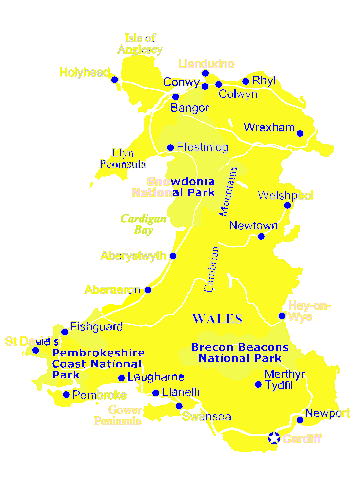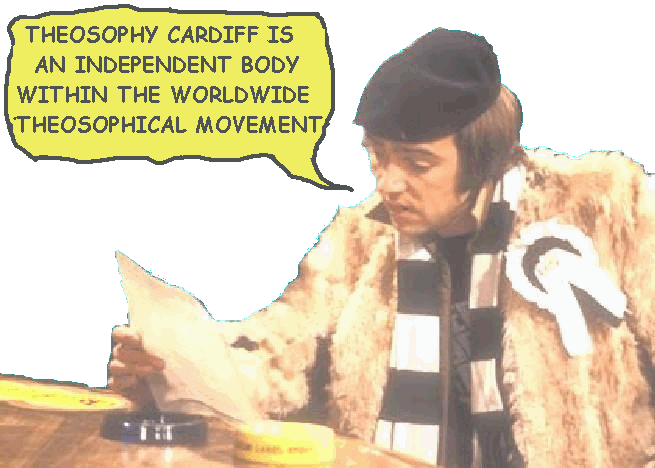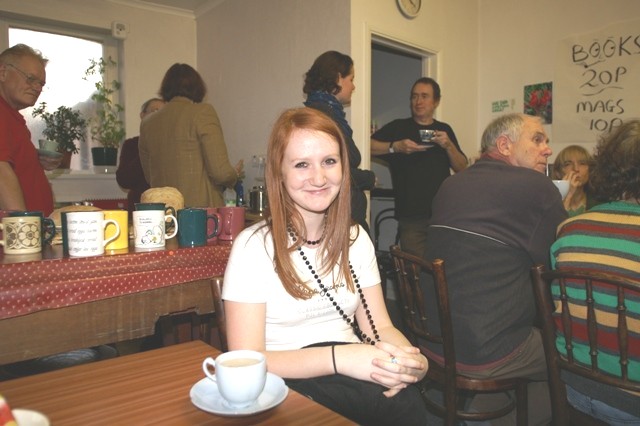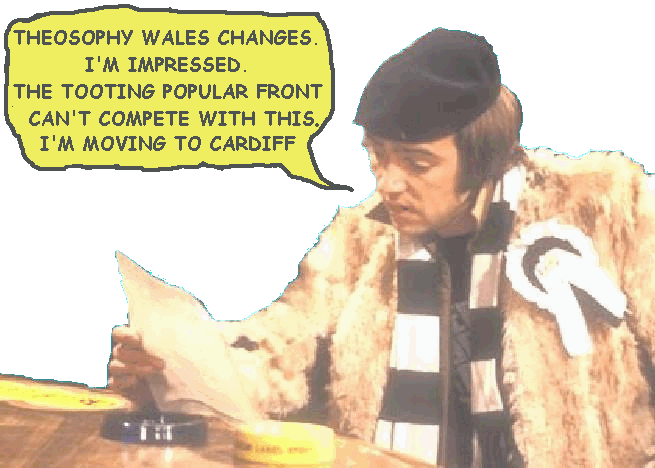Cardiff Theosophical
Society in Wales
206 Newport Road,
Cardiff, Wales, UK. CF24 -1DL
Please click here to find out what’s
on at Cardiff
Theosophical Society
Cardiff Theosophical Society meetings
are informal
and there’s always a
cup of tea afterwards
The Mind in Nature
by
HP Blavatsky
Helena
Petrovna Blavatsky
1831
– 1891
The
Founder of Modern Theosophy
First
published in Lucifer, September, 1896 p9
Great is the
self-satisfaction of modern science, and unexampled its achievements. Pre-christian and medićval
philosophers may have left a few landmarks over unexplored mines: but the
discovery of all the gold and priceless jewels is due to the patient labours of the modern scholar. And thus they declare that
the genuine, real knowledge of the nature of the Kosmos and of man
is all of recent growth. The luxuriant modern plant
has sprung from the dead weeds of ancient superstitions.
Such,
however, is not the view of the students of Theosophy. And they say that it is
not sufficient to speak contemptuously of "the untenable conceptions of an
uncultivated past," as Mr. Tyndall and others have done, to hide the intellectual
quarries out of which the reputations of so many modern philosophers and
scientists have been hewn. How many of our distinguished
scientists have derived honour and credit by merely
dressing up the ideas of those old philosophers, whom they are ever ready to
disparage, is left to an impartial posterity to say. But conceit and self-opinionatedness have fastened like two hideous cancers on
the brains of the average man of learning; and this is especially the case with
the Orientalists -- Sanskritists,
Egyptologists and
Assyriologists.
The former
are guided (or perhaps only pretend to be guided) by
post-Mahâbhâratan commentators; the latter by arbitrarily
interpreted papyri, collated with what this or the other Greek writer said, or passed
over in silence, and by the cuneiform inscriptions on half-destroyed clay
tablets copied by the Assyrians from "Accado-"
Babylonian records. Too many of them are apt to forget, at every convenient
opportunity, that the numerous changes in language, the allegorical phraseology
and evident secretiveness of old mystic writers, who were generally under the
obligation never to divulge the solemn secrets of the sanctuary, might have
sadly misled both translators and commentators.
Most of our Orientalists will rather allow their conceit to run away
with their logic and reasoning powers than admit their ignorance, and they will
proudly claim like Professor Sayce1 that they have unriddled
the true meaning of the religious symbols of old, and can interpret esoteric
texts far more correctly than could the initiated hierophants of Chaldća and Egypt.
(fn 1) See the Hibbert Lectures for
1887, pages 14-17, on the origin and growth of the religion of the ancient
Babylonians, where Prof. A. H. Sayce says that though
"many of the sacred texts were so written as to be intelligible only to the
initiated [italics mine] ... provided with keys and glosses,"
nevertheless,
as many of the latter, he adds, "are in our
hands," they (the Orientalists) have "a clue
to the interpretation of these documents which even the initiated priests did
not possess." (p17)
This
"clue" is the modern craze, so dear to Mr. Gladstone, and so stale in
its monotony to most, which consists in perceiving in every symbol of the religions
of old a solar myth, dragged down, whenever opportunity requires, to a sexual
or phallic emblem. Hence the statement that while "Gisdhubar
was but a champion and conqueror of old times," for the Orientalists, who "can penetrate beneath the myths"
he is but a solar hero, who was himself but the transformed descendant of a
humbler God of Fire (loc. cit. p.17).
This amounts
to saying that the ancient hierogrammatists and priests, who were the inventors
of all the allegories which served as veils to the many truths taught at the
Initiations, did not possess a clue to the sacred texts composed or written by themselves. But this is on a par with that other illusion of
some
Sanskritists, who, though they have never even been in India,
claim to know Sanskrit accent and pronunciation, as also the meaning of the
Vedic allegories, far better than the most learned among the greatest Brahmânical pundits and Sanskrit scholars of India.
After this
who can wonder that the jargon and blinds of our medićval
alchemists and Kabalists are also read literally by
the modern student; that the Greek and even the ideas od
Aeschylus are corrected and improved upon by the Cambridge and Oxford Greek
scholars, and that the veiled parables of Plato are attributed to his
"ignorance." Yet if the students of the dead languages know anything,
they ought to know that the method of extreme necessitarianism
was practiced in ancient as well as in modern philosophy; that from the first
ages of man, the fundamental truths of all that we are permitted to know on
earth were in the safe keeping of the Adepts of the sanctuary; that the
difference in creeds and religious practice was only external; and that those
guardians of the primitive divine revelation, who had solved every problem that
is within the grasp of human intellect, were bound together by a universal
freemasonry of science and
philosophy, which formed one unbroken chain around the
globe. It is for philology and the Orientalists to endeavour to find the end of the thread. But if they will
persist in seeking it in one direction only, and that
the wrong one, truth and fact will never be discovered. It thus remains the
duty of psychology and Theosophy to help the world to arrive at them. Study the
Eastern religions by the light of Eastern -- not Western -- philosophy, and if
you happen to relax correctly one single loop of the old
religious systems, the chain of mystery may be
disentangled. But to achieve this, one must not agree with those who teach that
it is unphilosophical to enquire into first causes,
and that all that we can do is to consider their physical effects. The field of
scientific investigation is bounded by physical nature on every side; hence,
once the limits of matter are reached, enquiry must stop and work be re-commenced. As the Theosophist has no desire to play at
being a squirrel upon its revolving wheel, he must refuse to follow the lead of
the materialists.
He, at any
rate, knows that the revolutions of the physical world are, according
to the ancient doctrine, attended
by like revolutions in the world of intellect, for the spiritual evolution in
the universe proceeds in cycles, like the physical one. Do we not see in
history a regular alternation of ebb and flow in the tide of human progress? Do
we not see in history, and even find this within our own experience, that the
great kingdoms of the world, after reaching the culmination of their greatness,
descend again, in accordance with the same law by which they ascended? till, having reached the lowest point, humanity reasserts
itself and mounts up once more, the height of its attainment being, by
this law of ascending progression by cycles, somewhat
higher than the point from which it had before descended? Kingdoms and empires
are under the same cyclic laws as plants, races and everything else in Kosmos.
The division
of the history of mankind into what the Hindus call the Sattva,
Tretya, Dvâpara and Kali
Yugas, and what the Greeks referred to as "the Golden, Silver, Copper, and
Iron Ages" is not a fiction. We see the same thing in the literature of
peoples. An age of great inspiration and unconscious
productiveness is invariably followed by an age of criticism
and consciousness. The one affords material for the analyzing and critical
intellect of the other. "The
moment is more opportune than ever for the review of old philosophies. Archćologists,
philologists, astronomers, chemists and physicists are getting
nearer and nearer to the point where they will be
forced to consider them. Physical
science has already reached its limits of exploration; dogmatic theology sees
the springs of its inspiration dry. The day is approaching when the world will
receive the proofs that only ancient religions were in harmony with nature, and
ancient science embraced all that can be known."
Once more the
prophecy already made in
"Secrets
long kept may be revealed; books long forgotten and arts long time lost may be
brought out to light again; papyri and parchments of inestimable importance
will turn up in the hands of men who pretend to have unrolled them from
mummies, or stumbled upon them in buried crypts; tablets and pillars, whose
sculptured revelations will stagger theologians and confound scientists, may
yet be excavated and interpreted. Who knows the possibilities of the future? An
era of disenchantment and rebuilding will soon begin -- nay, has already begun.
The cycle has almost run its course; a new one is about to begin, and the
future pages of history may contain full evidence, and convey full proof of the
above."
Since the day
that this was written much of it has come to pass, the discovery the Assyrian
clay tiles and their records alone having forced the interpreters of the
cuneiform inscriptions--both Christians and Freethinkers--to alter the very age
of the world.2 fn 2) Sargon, the first "Semitic" monarch of
Babylonia, the prototype and original of Moses, is now placed 3,750 years B.C.
(p21), and the Third Dynasty of Egypt "some 6,000 years ago," hence
some years before the world was created, agreeably to Biblical chronology. See Hibbert Lectures on
The
chronology of the Hindu Purânas, reproduced in The Secret Doctrine, is now
derided, but the time may come when it will be universally accepted. This may
be regarded as simply an assumption, but it will be so only for the present.
It is in
truth but a question of time. The whole issue of the quarrel between the defenders
of ancient wisdom and its detractors -- lay and clerical -- rests (a) on
incorrect comprehension of the old philosophies, for the lack of the keys the Assyriologists boast of having discovered; and (b) on the
materialistic and anthropomorphic tendencies of the age. This in no wise
prevents the Darwinists and materialistic philosophers from digging into the
intellectual mines of the ancients and helping themselves to the wealth of ideas
they find in them; nor
the divines
from discovering Christian dogmas in Plato's philosophy and calling them
"presentiments," as in Dr. Lundy's Monumental Christianity, and other
like modern works.
Of such
"presentiments" the whole literature -- or what remains of this sacerdotal
literature -- of
unknowable to the "brain" intellect, or the
conditioned and limited cognition of man.
To imagine
any witness to it in the manifested universe, other than as Universal Mind, the
Soul of the universe is impossible. That which alone stands as an undying and
ceaseless evidence and proof of the existence of that One Principle, is the
presence of an undeniable design in kosmic mechanism,
the birth, growth,
death and transformation of everything in the
universe, from the silent and unreachable stars down to the humble lichen, from
man to the invisible lives now called microbes. Hence the universal acceptation
of "Thought Divine," the Anima Mundi of all
antiquity.
This idea of Mahat (the great) Akâshâ or
Brahma's aura of transformation with the Hindus, of Alaya,
"the divine Soul of thought and compassion" of the trans-Himâlayan mystics; of Plato's "perpetually reasoning
Divinity," is the oldest of all the doctrines now known to, and believed
in, by man. Therefore
they cannot be said to have originated with Plato,
nor with Pythagoras, nor with any of the philosophers within the historical
period. Say the Chaldćan Oracles "The works of
nature co-exist with the intellectual noero,
spiritual Light of the Father. For it is the Soul psyche
which adorned the great heaven, and which adorns it after the Father."
"The
incorporeal world then was already completed, having its seat in the Divine Reason,"
says Philo, who is erroneously accused of deriving his philosophy from Plato.
In the Theogony of Mochus, we find Ćther first, and then the air; the two principles from
which Ulom, the intelligible (noetos)
God (the visible universe of matter) is born.
In the Orphic
hymns, the Eros-Phanes evolves from the Spiritual
Egg, which the ćthereal winds impregnate, wind being
"the Spirit of God," who is said to move in ćther,
"brooding over the Chaos" -- the Divine "Idea." In the
Hindu Kathopanishad, Purusha,
the Divine Spirit, stands before the original Matter;
from their union springs the great Soul of the World,
"Mahâ-Âtmâ, Brahm, the
Spirit of Life;" these latter appellations are identical with the
Universal Soul, or Anima Mundi, and the Astral Light
of the Theurgists and Kabalists. Pythagoras brought
his doctrines from the eastern sanctuaries, and Plato
compiled them into a form more intelligible than the
mysterious numerals of the Sage -- whose doctrines he had fully embraced -- to
the uninitiated mind. Thus, the Kosmos is "the Son" with Plato,
having for his father and mother the Divine
Thought and
Matter. The "Primal Being" (Beings, with the Theosophists, as they are
the collective aggregation of the divine Rays), is an emanation of the Demiurgic
or Universal Mind which contains from eternity the idea of the "to be created
world" within itself, which idea the unmanifested
Logos produces of Itself. The first Idea "born in
darkness before the creation of the world" remains in the unmanifested Mind; the second is this Idea going out as a reflection
from the Mind (now the manifested Logos), becoming clothed with matter, and
assuming an objective existence.
H P Blavatsky
Cardiff
Theosophical Society in Wales
206 Newport Road,
Cardiff, Wales, UK. CF24 -1DL
_____________________________
Theosophy
Links
Cardiff Theosophical
Society meetings are informal
and there’s always a cup of tea afterwards
The
Cardiff Theosophical Society Website
The
National Wales Theosophy Website
Bangor,
Cardiff, Conwy & Swansea
If you
run a Theosophy Group, please feel free
to use any of the
material on this site
The Most Basic Theosophy
Website in the Universe
A quick overview of Theosophy
and the Theosophical Society
If you run a Theosophy Group you
can use this as an introductory handout.
Theosophy Cardiff’s Instant Guide
Theosophical Movement in Wales
as
it separates into independent
groups that run do their own show
One liners and quick explanations
H P
Blavatsky is usually the only
Theosophist
that most people have ever
heard of. Let’s
put that right
The Voice of the Silence Website
An
Independent Theosophical Republic
Links
to Free Online Theosophy
Study
Resources; Courses, Writings,
The main criteria for the inclusion of
links on this site is that they have some
relationship (however tenuous) to Theosophy
and are lightweight, amusing or entertaining.
Topics include Quantum Theory and Socks,
Dick Dastardly and Legendary Blues Singers.
A selection of articles on Reincarnation
Provided in response to the large
number of enquiries we receive at
Cardiff Theosophical Society on this subject
The Voice of the Silence Website
This is for
everyone, you don’t have to live
in Wales to make
good use of this Website
No
Aardvarks were harmed in the
Within the British Isles, The Adyar
Based Theosophical Society is the largest
Theosophy body with around 200 memebrs and
has Groups in;
Bangor*Basingstoke*Billericay*Birmingham*Blackburn*Bolton*Bournemouth
Bradford*Bristol*Camberley*Cardiff*Chester*Conwy*Coventry*Dundee*Edinburgh
Folkstone*Glasgow*Grimsby*Inverness*Isle
of Man*Lancaster*Leeds*Leicester
Letchworth*London*Manchester*Merseyside*Middlesborough*Newcastle upon Tyne
North Devon*Northampton*Northern Ireland*Norwich*Nottingham
Perth*Republic of Ireland*Sidmouth*Southport*Sussex*Swansea*Torbay
Tunbridge Wells*Wallasey*Warrington*Wembley*Winchester*Worthing
The Spiritual Home of Urban Theosophy
The Earth Base for Evolutionary Theosophy
A
B
C
D
EFG
H
IJ
KL
M
N
OP
QR
S
T
UV
WXYZ
Complete Theosophical Glossary in Plain Text Format
1.22MB
Quick
Explanations with Links to More Detailed Info
What is Theosophy ? Theosophy Defined (More Detail)
Three Fundamental Propositions Key Concepts of Theosophy
Cosmogenesis
Anthropogenesis
Root Races
Karma
Ascended Masters After Death States
Reincarnation
The Seven Principles of Man Helena Petrovna Blavatsky
Colonel Henry Steel Olcott William Quan Judge
The Start of the Theosophical Society
History of the Theosophical Society
Theosophical Society Presidents
History of the Theosophical Society in Wales
The Three Objectives of the Theosophical Society
Explanation of the Theosophical Society Emblem
Glossaries of Theosophical Terms
An Outstanding Introduction to Theosophy
By a student of Katherine Tingley
Elementary Theosophy Who is the Man? Body and Soul
Body, Soul and Spirit Reincarnation Karma
What Theosophy Is From the Absolute to Man
The Formation of a Solar System The Evolution of Life
The Constitution of Man After Death Reincarnation
The Purpose of Life The Planetary Chains
The Result of Theosophical Study
An Outline of Theosophy
Charles Webster Leadbeater
Theosophy - What it is How is it Known? The Method of Observation
General Principles The Three Great Truths The Deity
Advantage Gained from this
Knowledge The Divine Scheme
The Constitution of Man The True Man Reincarnation
The Wider Outlook Death Man’s Past and Future
Cause and Effect What Theosophy does for us
_____________________
Try these if you are looking
for a local
Theosophy Group or Centre
UK Listing of Theosophical Groups
Please tell us about your UK Theosophy Group
___________________
into categories and presented according to relevance of
website.
Web Directory
- Add Link - Submit Article - Online Store - Forum
______________________

General pages about Wales, Welsh History
and The History of Theosophy in Wales
Wales is a
Principality within the United Kingdom and has an eastern
border with England. The
land area is just over 8,000 square miles.
Snowdon in North Wales is
the highest mountain at 3,650 feet.
The coastline is
almost 750 miles long. The population of Wales
as at the 2001 census is 2,946,200.
________________

Bangor
Conwy & Swansea Lodges are members
of the Welsh
Regional Association (Formed 1993).
Theosophy
Cardiff separated from the Welsh Regional Association in March 2008 and is
now a stand alone group
affiliated to
the Adyar Theosophical Society.
High
Drama & Worldwide Confusion
as Theosophy
Cardiff Separates from the
Welsh
Regional Association (formed 1993)
Cardiff
Theosophical Society in Wales
206 Newport Road,
Cardiff, Wales, UK. CF24 -1DL



